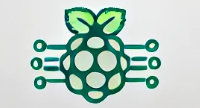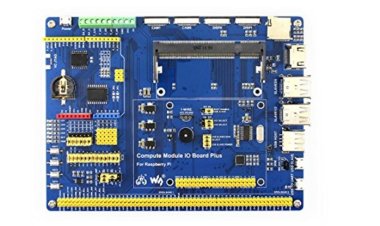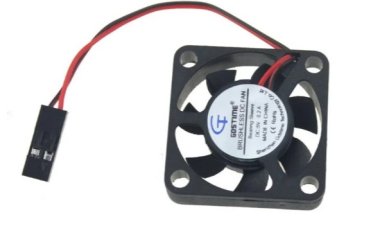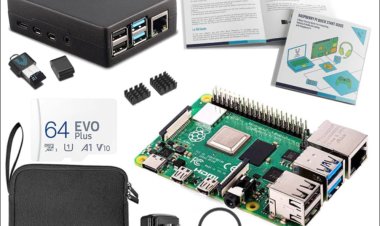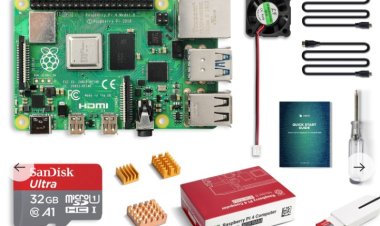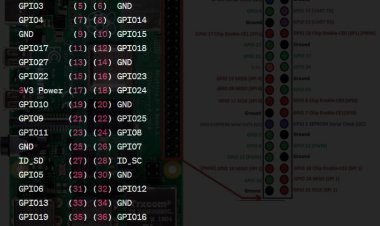Get Started with Raspberry Pi 3 Model B
Explore the possibilities with Raspberry Pi 3 Model B
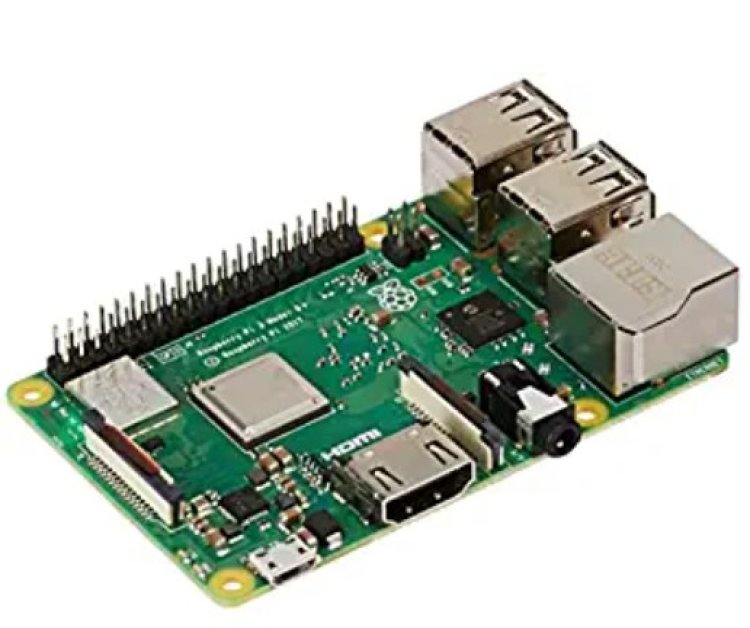
Why use Raspberry Pi 3 Model B?
The Raspberry Pi 3 Model B stands as a beacon among single-board computers, revered for its rich feature set and affordability. Here's why it's the go-to choice for a myriad of projects:
1. Versatility: Whether you're diving into programming, robotics, home automation, or crafting media centers, the Raspberry Pi 3 Model B is a versatile powerhouse, ready to tackle a wide spectrum of projects with ease.
2. Power and Performance: Armed with a quad-core ARM Cortex-A53 processor and 1GB of RAM, the Raspberry Pi 3 Model B delivers unparalleled processing power and performance. Smooth multitasking and handling demanding tasks are its forte.
3. Connectivity: Built-in Wi-Fi and Bluetooth capabilities enable seamless wireless connectivity, allowing effortless internet access, device communication, and integration into IoT projects sans additional peripherals.
4. GPIO Pins: The GPIO header opens up a world of possibilities for interfacing with electronic components and sensors, making it a playground for electronics enthusiasts and hobbyists keen on building interactive projects.
5. Community and Support: Backed by a vast and vibrant global community, Raspberry Pi boasts extensive online resources, tutorials, forums, and community support. Whether you're a beginner or seasoned pro, help is readily available to kickstart your projects and troubleshoot any hurdles along the way.
6. Cost-Effectiveness: Offering a wealth of features at an affordable price, the Raspberry Pi 3 Model B democratizes access to powerful computing. It's a budget-friendly solution that caters to hobbyists, students, educators, and professionals alike, making innovation accessible to all.
Harnessing the Raspberry Pi 3 Model B unlocks a world of possibilities, enabling users to unleash their creativity, learn new skills, and embark on exciting projects without breaking the bank. With its exceptional blend of affordability, power, and versatility, it's no wonder the Raspberry Pi 3 Model B reigns supreme as the quintessential single-board computer for a diverse array of applications.
Why is Raspberry Pi 3B so expensive?
The Raspberry Pi 3B commands a higher price tag compared to other mini computers, primarily due to several key factors:
1. Powerful Processor: Sporting a quad-core Cortex-A53 processor, the Raspberry Pi 3B packs a punch in terms of computing power. This robust processor enables advanced graphic rendering, audio and video processing, and other demanding tasks, setting it apart from its competitors and justifying its premium price point.
2. Wide Software Support: The Raspberry Pi 3B boasts extensive support for a multitude of software applications, making it one of the most versatile mini computers available. With compatibility for operating systems like Raspbian, Ubuntu, and Windows 10 IoT Core, as well as support for various programming languages including Python, Java, and C/C++, the Raspberry Pi 3B offers unparalleled flexibility for diverse projects. Additionally, its range of input/output options such as HDMI, USB, and Ethernet ports further enhances its capability, contributing to its higher cost.
3. Quality and Reliability: Raspberry Pi has established itself as an industry-standard brand known for producing high-quality and reliable products. The Raspberry Pi 3B is no exception, undergoing rigorous testing and quality assurance measures to ensure superior performance and durability, factors that contribute to its elevated price point.
4. Research and Development: The development of the Raspberry Pi 3B involves significant research and development efforts to engineer a product that meets the demanding requirements of users across various industries and applications. The investment in R&D contributes to the overall cost of production, resulting in a higher price for the end consumer.
5. Economies of Scale: While Raspberry Pi benefits from economies of scale due to its large production volume, the extensive features and capabilities of the Raspberry Pi 3B necessitate higher production costs, ultimately influencing its pricing.
6. Community Support and Ecosystem: The Raspberry Pi 3B enjoys strong community support and an extensive ecosystem of accessories, peripherals, and resources. This robust ecosystem enhances the value proposition of the Raspberry Pi 3B, but also contributes to its higher price due to the investment required to maintain and expand the ecosystem.
In conclusion, while the Raspberry Pi 3B may come with a higher price tag, its exceptional performance, wide range of features, industry-standard status, and robust ecosystem make it a worthwhile investment for users seeking a powerful and versatile mini computer for their projects.
Is Raspberry Pi 3 Model B discontinued?
Yes, the Raspberry Pi 3 Model B has indeed been discontinued by the Raspberry Pi Foundation. Introduced in February 2016, it enjoyed widespread popularity and served as a cornerstone in the realm of single-board computers for several years. However, with the subsequent releases of newer models like the Raspberry Pi 4 Model B and Raspberry Pi 400, the foundation made the decision to phase out production and sales of the Raspberry Pi 3 Model B.
This discontinuation aligns with common industry practices where older models are retired as newer and more advanced versions are introduced to cater to evolving user needs and incorporate the latest technological advancements. While the Raspberry Pi 3 Model B may no longer be in production, it could still be available through third-party sellers or as refurbished units. However, for ongoing projects or new applications, it's advisable to explore the more recent models offered by the Raspberry Pi Foundation to leverage their enhanced features and capabilities.
What is the difference between Raspberry Pi 3 A and B?
The Raspberry Pi 3 Model A and Model B are distinct models within the Raspberry Pi lineup, each with its own set of features and specifications. While they share similarities, there are notable differences between the two that warrant consideration when choosing between them.
Raspberry Pi 3 Model A:
1. Affordability: The Model A is the more budget-friendly option in the lineup.
2. Processor and Memory: It features a Broadcom BCM2711 Single-Core CPU, 512 MB of onboard RAM, and a GPU identical to the Raspberry Pi 4.
3. Connectivity: Equipped with a single USB port, HDMI video connector, and a 3.5mm audio out.
4. Form Factor: The Model A boasts a smaller form factor compared to the Model B.
5. Ethernet Port: It lacks an onboard Ethernet port, meaning it relies solely on wireless connectivity options.
6. Price: Due to its more limited features and connectivity options, the Model A is typically priced lower than the Model B.
Raspberry Pi 3 Model B:
1. Enhanced Features: The Model B offers upgraded features, including a Broadcom BCM3385 Single-Core CPU, 802.11ac Wireless, and 1GB of onboard RAM.
2. Connectivity: With four USB ports, including one USB 3.0 port, the Model B provides greater flexibility for connecting peripherals.
3. Ethernet Port: It includes a built-in 10/100 Ethernet port, enabling wired network connectivity in addition to wireless options.
4. Form Factor: Following the traditional Raspberry Pi board size and layout, the Model B is larger than the Model A.
5. Price: Reflecting its enhanced features and connectivity options, the Raspberry Pi 3 Model B is typically priced slightly higher than the Model A.
In summary, the choice between the Raspberry Pi 3 Model A and Model B hinges on factors such as budget, desired features, and connectivity requirements. While the Model A offers affordability and a smaller form factor, the Model B provides enhanced features and connectivity options at a slightly higher price point.
Which is better Raspberry Pi 3 A+ or B+?
Ultimately, the choice between the Raspberry Pi 3 A+ and B+ comes down to your specific needs and preferences. Here's a breakdown to help you decide:
Raspberry Pi 3 A+:
- Ultra-Compact: With its smaller dimensions measuring only 65x56mm, the A+ is ideal for projects where space is limited.
- Specs: It features a 1.4GHz quad-core CPU, 512MB RAM, and a MicroSD card slot, providing sufficient power for basic operations.
- Connectivity: The A+ supports Bluetooth, Wi-Fi, and USB ports, making it versatile for various applications.
- Power Efficiency: It comes with an upgraded power supply capable of handling more power-hungry operations.
Raspberry Pi 3 B+:
- Enhanced Performance: The B+ boasts a slightly faster 1.4GHz dual-core processor and 1GB RAM, offering improved performance over the A+.
- Connectivity: With four USB ports and improved Ethernet and Wi-Fi performance, the B+ provides greater flexibility for connecting peripherals and networking options.
- PoE Support: The B+ features Power over Ethernet (PoE) support, allowing for convenient power and network connectivity through a single cable.
- Form Factor: While larger than the A+, measuring 92x56mm, the B+ still maintains a compact size suitable for various projects.
In summary, if you prioritize compactness and basic functionality, the Raspberry Pi 3 A+ is a suitable choice. However, if you require higher performance, more connectivity options, and advanced features, the Raspberry Pi 3 B+ is the better option for your needs. Consider your project requirements and budget when making your decision.
